It’s not possible to over-prepare for a major life change like becoming a full-time liveaboard and sailing off to far-flung places. At the same time, every liveaboard we talked to said, “If you’re considering the cruising lifestyle, do it, and do it now!” and “My only regret is that I didn’t do it sooner.” Indeed, life is too short. So let’s talk about how to prepare for liveaboard boat life, or least how we did it.
There was a balance we tried to strike as we made this transition—we wanted to make informed decisions without spending too many years doing so.
That was hard for us: we always over-research and over-prepare for EVERYTHING. Even something like buying a washing machine becomes a major several-month project for us. This move onto a boat was no exception, and our inner Virgo selves were absolutely giddy. Planning? Research? Yes, please!
First, a huge caveat. Your preparation will vary based on how far you want to go. In our case, we knew we wanted to try to sail around the world, so our efforts were focused on bluewater cruising. If you intend to stay close to land, your preparations might look different. Also, we have cruiser friends who swear it takes about five years to make the transition. Everyone is different.
OK, so without further ado, here are some of the steps we took as we prepared for liveaboard boat life and what we would recommend to others.
1. Research the liveaboard/cruising lifestyle
We had been watching sailing YouTube videos for about five years, which is what got us to this point. But now we started watching ones with titles like, “We almost sank our boat!” We soaked up every bit of advice we could from as many liveaboard sailing channels as we could find. Our movie nights and nightly entertainment turned into really dark boat-breaking, boat-sinking YouTube binges.
We read books by Jimmy Cornell Sailing (our favorites were: World Cruising Routes, World Voyage Planner, and World Cruising Destinations) and also regularly perused websites like Cruising World, Sail Magazine, Yachting World, Practical Sailor, Ocean Navigator, Latitudes and Attitudes, Spinsheet, World Cruising Club, and Yachting Monthly. We regularly pull out Cornell’s books noted above.
We talked to as many liveaboards as we could, and we joined Facebook groups like Sailing and Cruising, Sailing Liveaboards, Liveaboards, A Global Community, and Liveaboard Lifestyle. At present, I belong to 94 Facebook groups, most of them sailing-related. I also kept up to date on the Instagram feeds of liveaboards. We wanted to see it all—the good, the bad, and the ugly.
It’s not an easy or glamorous lifestyle, but it’s really rewarding—”best of times and worst of times,” for sure. It’s important to know that going in.
2. Spend as much time on the water as possible
We have always owned power boats and boating has always been a major part of our lives. However, we hadn’t done much sailing since our HobieCat days. Time to brush off our sailing gloves and handle some lines!
Living in Austin, we didn’t have easy access to ocean sailing, so we started with our local lake, Lake Travis. We connected with the Austin Yacht Club and started serving as volunteer race and daysail crew pretty much every weekend and also rented sailboats ourselves a few times a month. Then we expanded our radius and did the same thing in Houston.
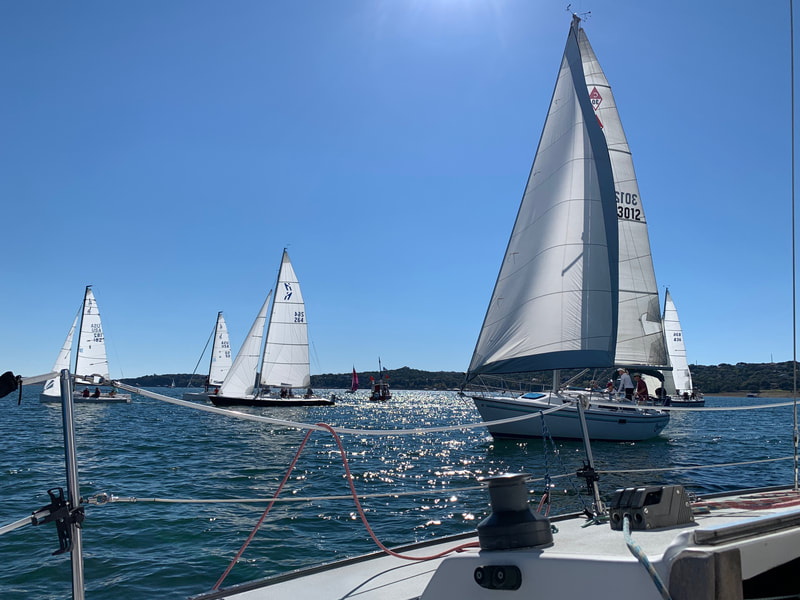
Next, we got in touch with South Coast Sailing Adventures and started joining weekly daysails in Galveston Bay. Not only did we get to do some great sailing, but we also learned a lot from our fellow sailors and made some great friends.
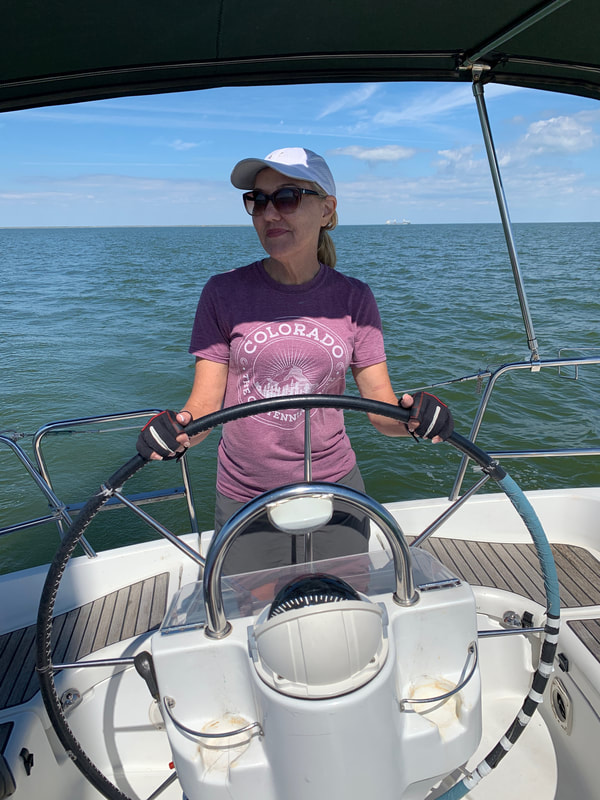
3. Take some sailing courses
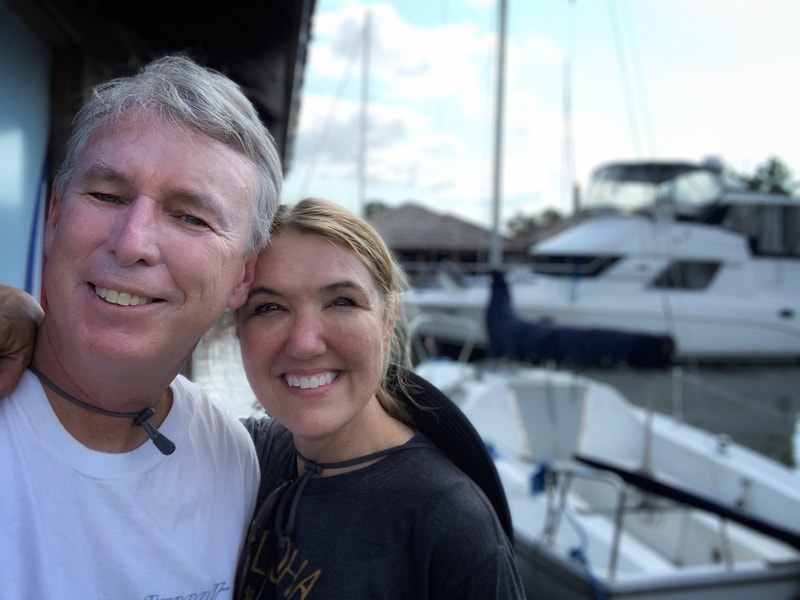
Some cruisers call this step unnecessary, but Roy says being in a training course forced him to memorize a lot of the basics, which he found helpful. We completed four training certifications from the American Sailing Association: ASA 101 (in Houston), and 103, 104, and 114 though U.S. Virgin Island Sailing School. The latter was a week-long liveaboard experience that enabled us to experience living aboard a catamaran for a week. While we don’t think ASA certifications are a necessity, we liked the fact that they got us more sea time and put some structure around our efforts. And as a bonus, we made some great friends while in the USVI and had a great time, so it doubled as a nice vacation.
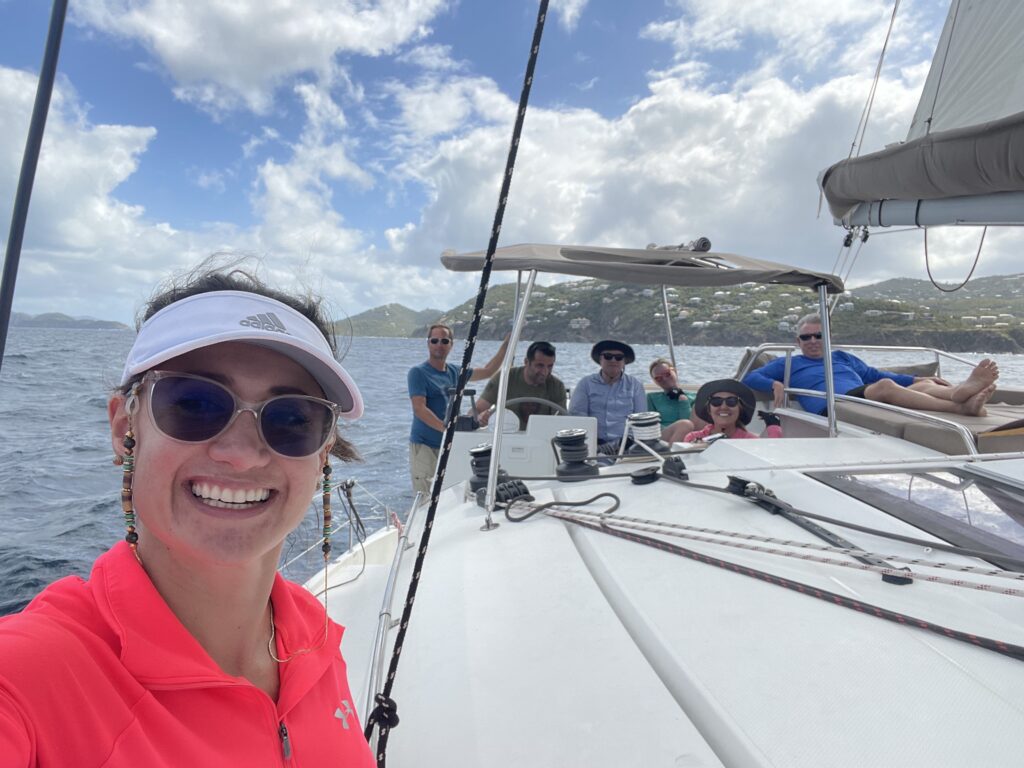
We also took some courses through NauticEd, which helped us continue learning from home throughout the week. They offer the first two courses for free, so you can test it out risk-free. Their website also has a handy feature: a free online logbook. We loved tracking our sea time there, which eventually helped when we applied for boat insurance.
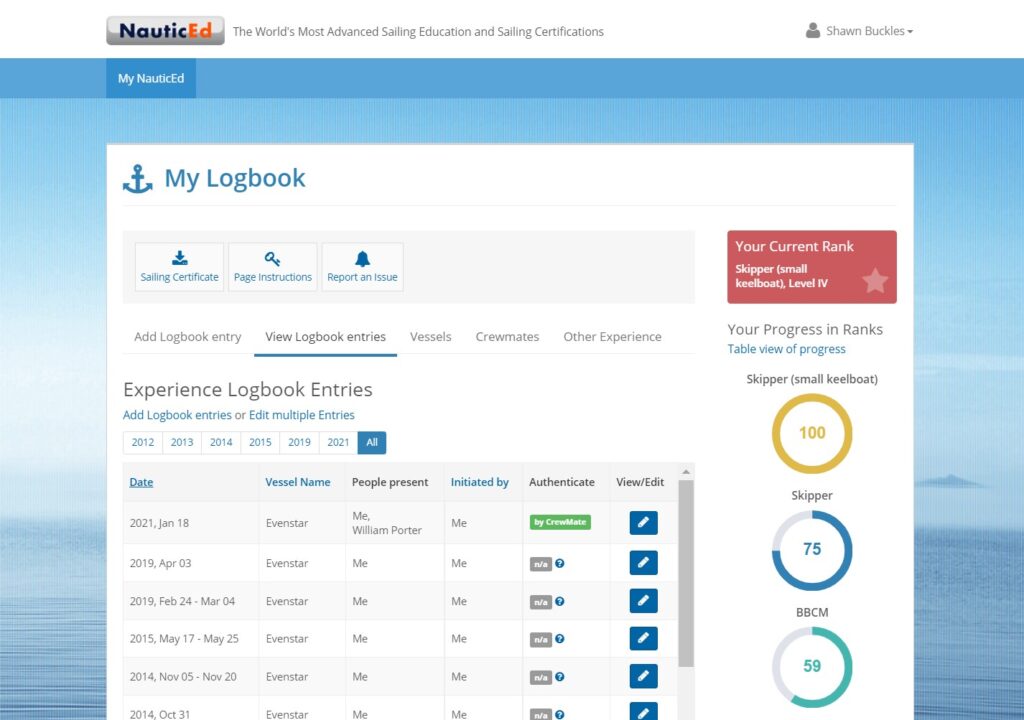
Luckily for us, Roy had earned his pilot’s license years earlier, and while not entirely applicable, it did provide some crossover knowledge in terms of weather and wind. If he hadn’t had that knowledge, we would have taken a meteorology course. The course we missed and still intend to take is “Celestial Navigation.”
4. Go offshore sailing and coastal cruising on the type of boat you will buy
“On the type of boat you will buy” is key. We knew that we wanted a catamaran because the idea of heeling was a nonstarter for me. So early on, we chartered a catamaran for a day in Galveston Bay. This was not inexpensive, but we really wanted to experience sailing on the type and size of boat we would hopefully be buying (this was before the weeklong ASA course in the USVI described above).
Most people who drop a few thousand dollars to charter a boat spend their time lounging, drinking adult beverages, and enjoying the views. But not us! We spent the entire time exploring the boat itself and picturing ourselves “doing life” on the boat while it was moving. We also spent a lot of time at the helm and interrogating the captain, who probably thought we were nuts.
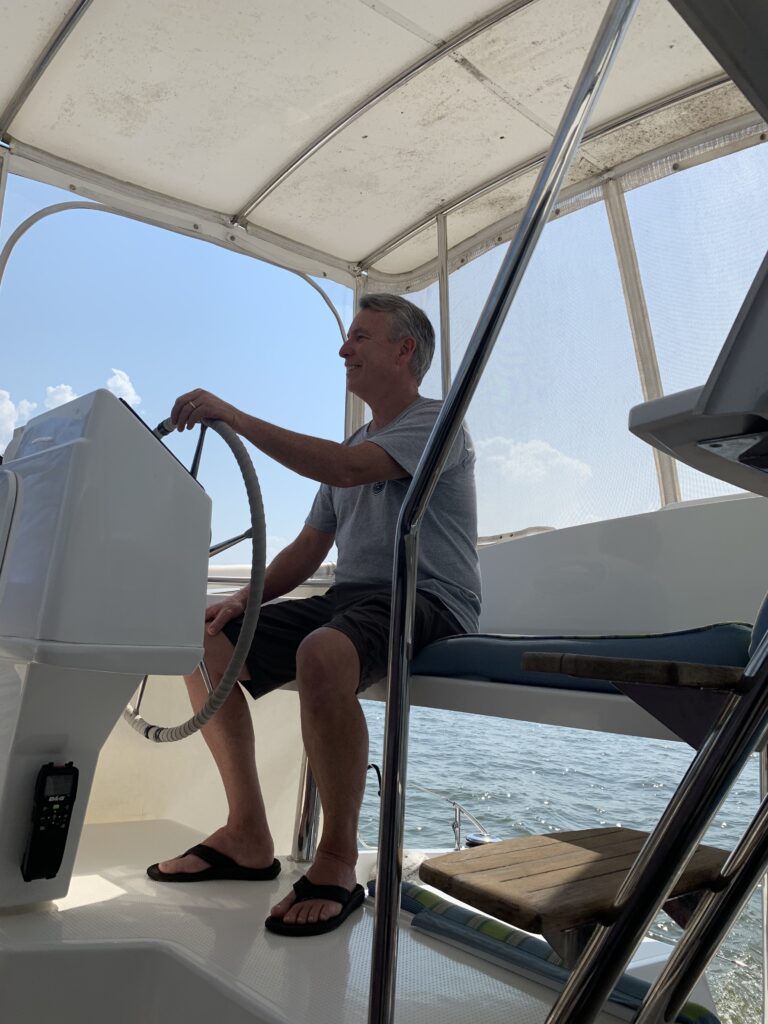
Now another test: would I get seasick on an offshore passage? Would I panic if I lost sight of land? Time to find out.
To “test the waters” (OK, pun intended), I served as an unpaid crew member on a seven-day passage from Florida to the U.S. Virgin Islands on a catamaran while Roy stayed in Austin for work. I found this opportunity through the Crewfinder Facebook group. Luckily, I loved every minute of it! I’m a big fan of crewing on boats to see if you like the cruising lifestyle. It’s free, and there are lots of opportunities out there, especially if you’re willing to do nightshifts.
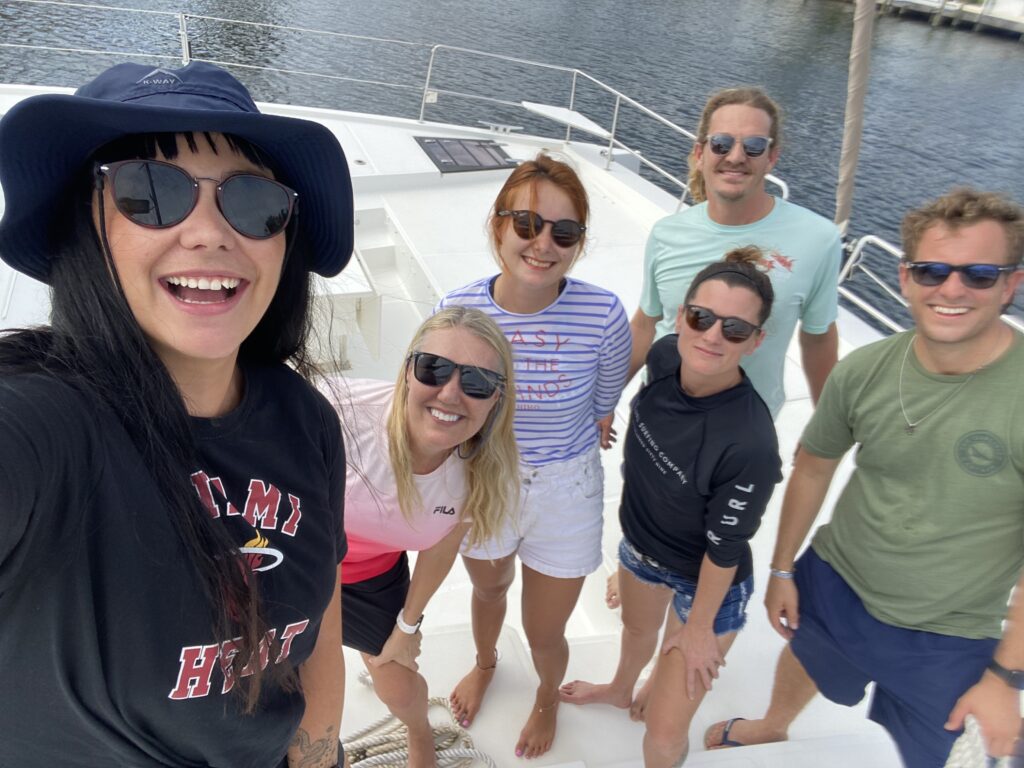
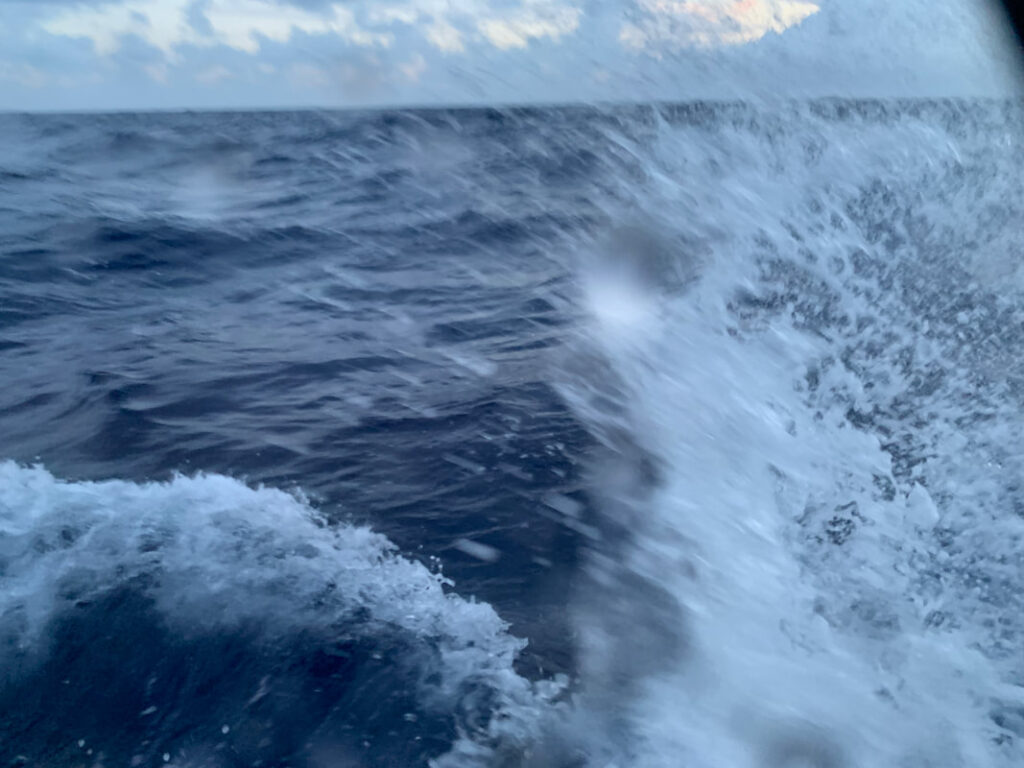
5. Do lots (and lots) of research before buying a boat
A boat is obviously a big investment, so we did not take this lightly. We created a 20-point checklist that we used to compare the different boat models. and watched the YouTube channels of a few people who had done a lot of boat reviews: Sailing Ruby Rose and Cruising Off Duty (now Bowman’s Woods). Cruiser forums also offered some good honest opinions.
We knew we wanted a catamaran and had researched all the major brands that we could afford; we had also toured and sailed on multiple catamaran models by this point. And now some fun—we attended the Annapolis Sailboat Show. We would highly recommend this step, because it allows you to see the different brands all in one place and to go back and forth between your favorite boats. Super helpful!
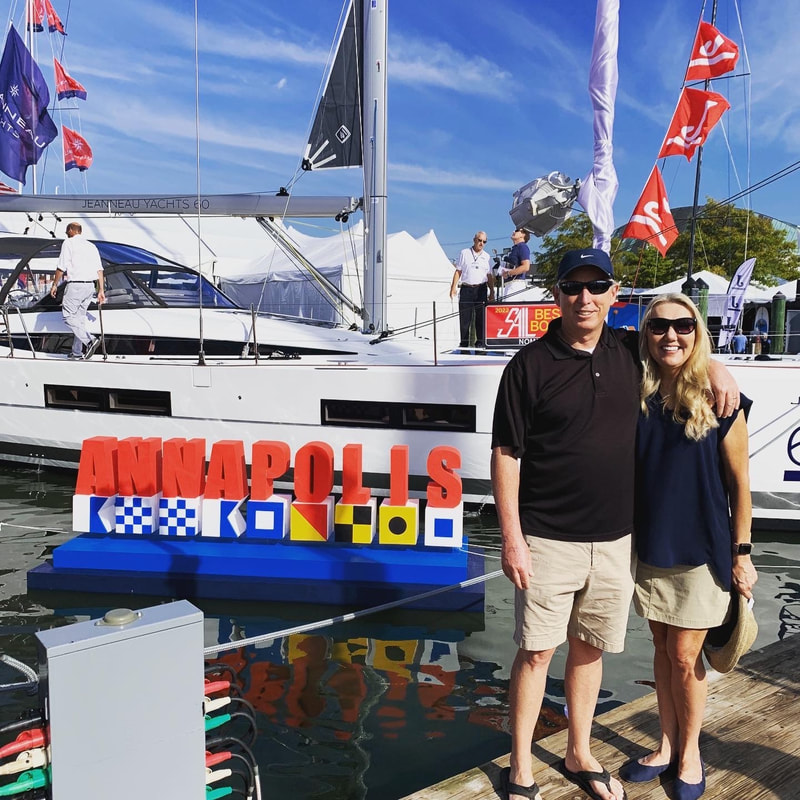
Annapolis Sailboat Show

6. Spend some extended time in a really tiny space with your crewmate(s)
OK, hang with me on this. When you live on a boat, you live in a really tiny home with your crewmate(s). Some people really value their alone time. If this describes you, hear this: there is very little alone time on a boat…and it’s a really tiny space. You are with your crewmate(s) 24/7, sometimes without Internet access, and without a lot of places to go for personal solitude.
I would recommend spending extended time together in a very small space WITHOUT phones, computers, tablets, or a TV. What I didn’t realize is how much time we would spend cooped up on the boat, sometimes without access to the Internet.
When we’re at anchor, it’s not unusual for us to spend several days on our boat without getting off. During these times, I get extremely restless. My solution? I got a portable stair stepper. But I really struggle with this particular aspect of liveaboard life.
7. Get to know your boat before setting off to remote places
Spoiler alert: we bought a boat! Since Roy hadn’t retired yet, we sailed the boat from Fort Lauderdale (where we bought her) to Houston in order to get to know her over the next 10 months. We hired a captain for that passage and that was the best decision we had ever made, since he knew our new-to-us boat inside and out. We learned a lot on that passage.
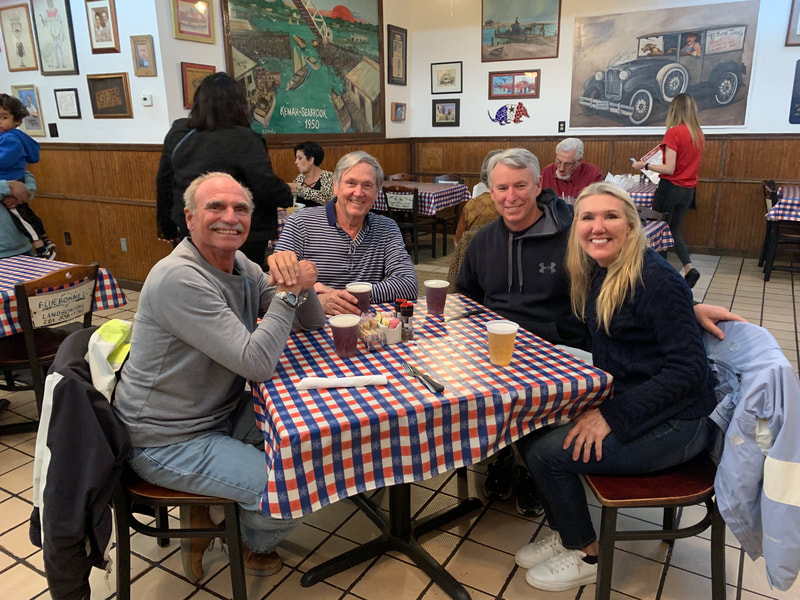
Now that our boat was in Houston, she was just a two-and-a-half hour drive away. We spent most weekends staying on the boat, outfitting her to suit our needs, and taking her on daysails.
As hurricane season approached, our insurance required that we move the boat north of the Florida/Georgia border. So we sailed her back over the Gulf and docked her at the City Marina in Charleston, SC. We then headed back to Austin to finish out Roy’s career. We could have done this passage on our own, but the Gulf of Mexico can be dicey sailing, and it was nice having a couple of extra people to share nightshifts with.
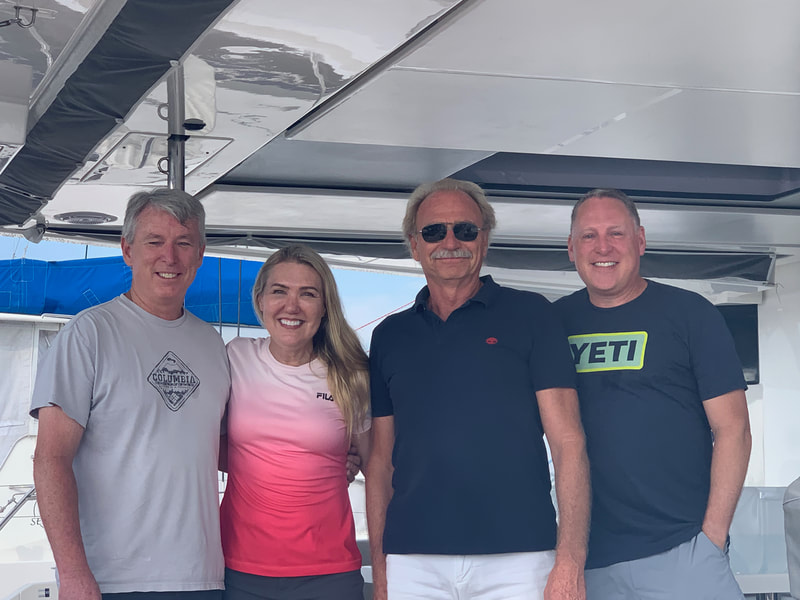
Our plan was to sail up and down the east coast of the U.S. for a year before heading down to the Bahamas. We are glad we did this, because it allowed us to get to know our boat even better before heading off to places with few or nonexistent marine and hardware stores.
8. Downsize
This is a highly personal topic. Some people sell everything they own, other’s don’t. We chose to keep (and rent out) our house for at least the first year to make sure we liked this new lifestyle. One thing is for sure, though: the less “stuff” you have, the less complicated things are.

Roy officially retired in October of 2022, and 30 days later, we we were flying to Charleston to reboard our boat as full-time liveaboards. Then a big moment: Roy and I sailed from Charleston to Fort Lauderdale by ourselves—our first solo passage!
How to prepare for liveaboard boat life: Conclusion
We believe figuring out how to prepare for liveaboard boat life is really important, given the magnitude of this life change. We don’t regret any of the steps we took, and we feel like we were pretty well-prepared by the time we set off on our big adventure.
After watching YouTube sailing channels for about five years, the rest of the preparation process took about three years in total. We’re happy with how things turned out. Now that we’re cruising full-time, is everything 100 percent as we expected? Definitely not. Are we happy with the decisions we made? Absolutely!

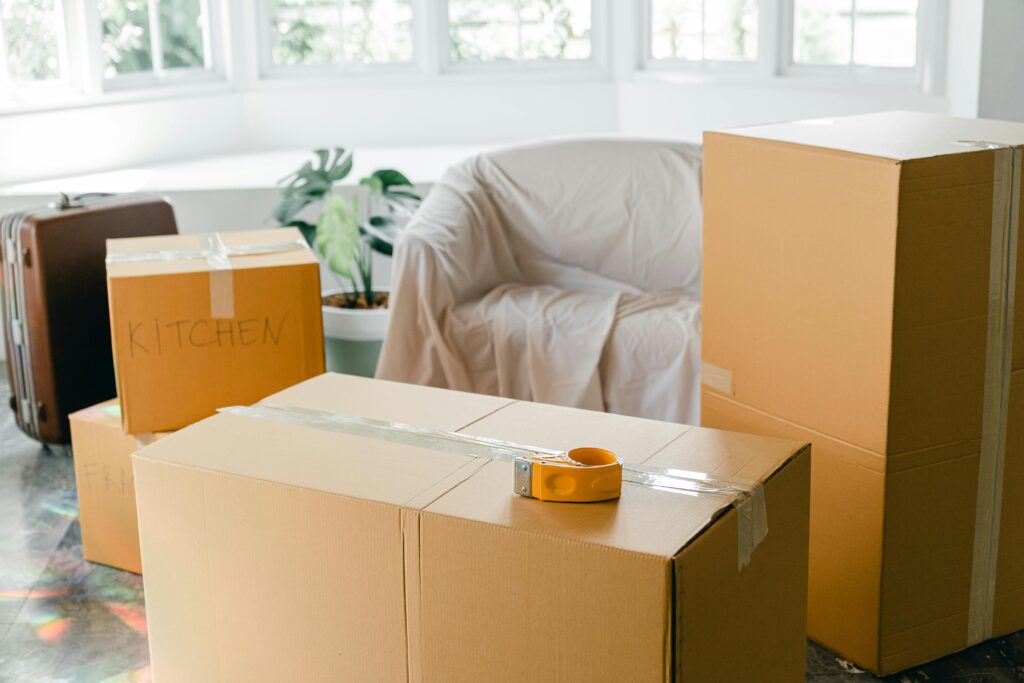
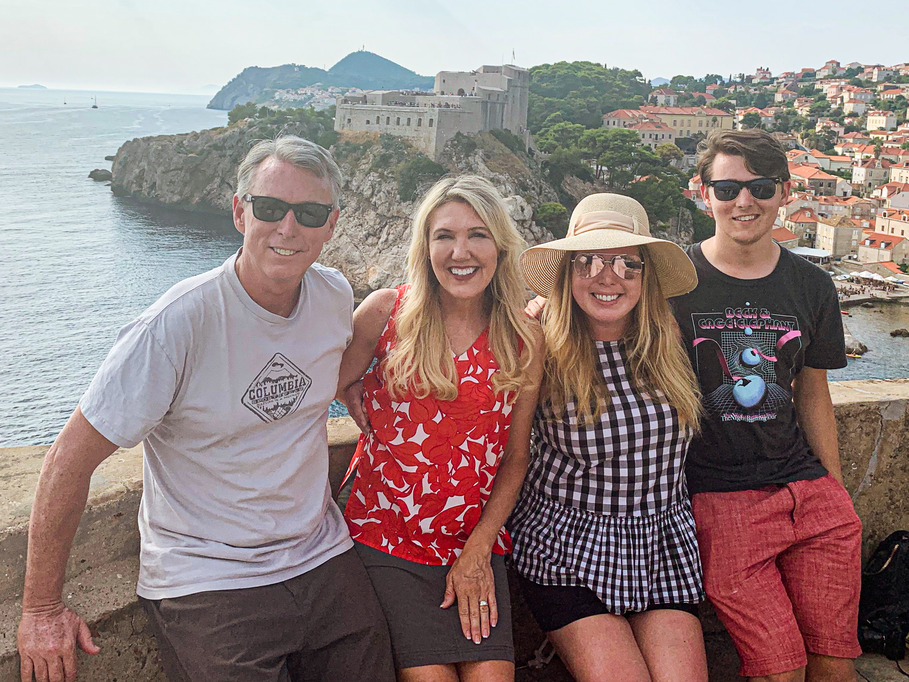
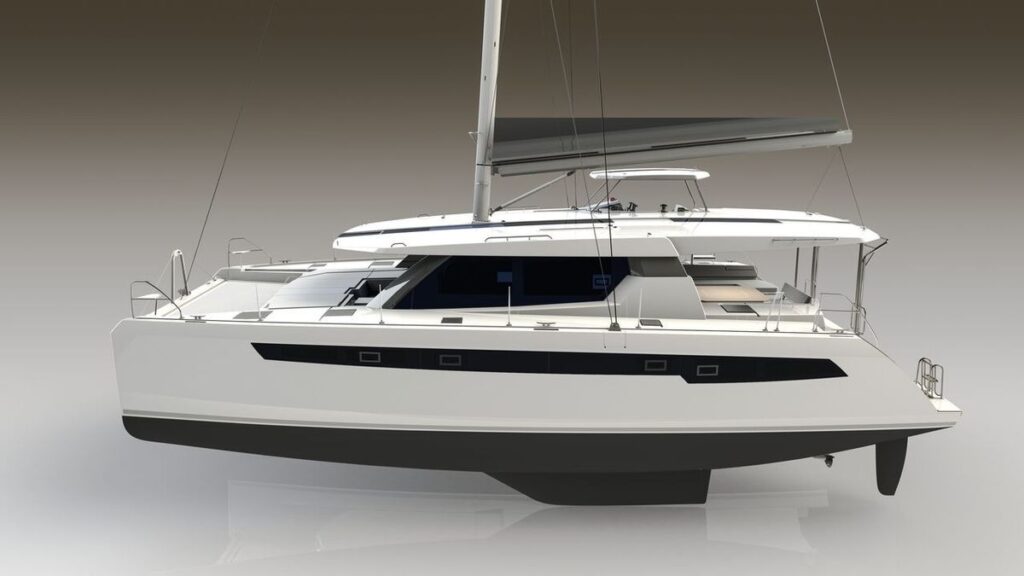
Оборудование переговорных комнат: качество, функциональность, инновации
оборудование переговорных комнат [url=https://www.oborudovaniye-peregovornykh-komnat1.ru/]https://www.oborudovaniye-peregovornykh-komnat1.ru/[/url] .
Комплексные решения для оснащения переговорной вашей компании
оборудование переговорной [url=https://osnashcheniye-peregovornoy1.ru/]https://osnashcheniye-peregovornoy1.ru/[/url] .
Как оформить лизинг коммерческого транспорта: пошаговая инструкция
лизинг на коммерческий транспорт [url=http://www.lizing-avto1.ru]http://www.lizing-avto1.ru[/url] .
Экран для проектора для учебных аудиторий и конференц-залов
экран проектора купить [url=http://www.proekcionnye-ehkrany1.ru]http://www.proekcionnye-ehkrany1.ru[/url] .
Деревянные дома под ключ: качественное строительство для комфортной жизни
построить деревянный дом под ключ [url=https://www.derevyannye-doma-pod-klyuch1.ru/]https://www.derevyannye-doma-pod-klyuch1.ru/[/url] .
Современные технологии для оснащения мультимедийным оборудованием
мультимедийное оснащение [url=https://www.osnashcheniye-multimediynym-oborudovaniyem1.ru]https://www.osnashcheniye-multimediynym-oborudovaniyem1.ru[/url] .
Интерактивные панели и аудиосистемы: интеграция мультимедийных систем
интеграция мультимедийных систем [url=http://integratsiya-multimediynykh-sistem1.ru]http://integratsiya-multimediynykh-sistem1.ru[/url] .
Комплексное оснащение переговорной комнаты: под ключ для вашего удобства
оборудование для переговорной комнаты [url=https://www.osnaschenie-peregovornoy-komnaty1.ru/]https://www.osnaschenie-peregovornoy-komnaty1.ru/[/url] .
Оборудование для ситуационного центра: стильные и функциональные решения
оснащение ситуационного центра [url=osnascheniye-situatsionnogo-tsentra1.ru]osnascheniye-situatsionnogo-tsentra1.ru[/url] .
Оборудование для актового зала: мультимедийные системы и комфортное освещение
оборудование для актового зала школы купить [url=http://www.oborudovaniye-aktovyh-zalov1.ru/]http://www.oborudovaniye-aktovyh-zalov1.ru/[/url] .
Комплексное оборудование для конференц зала под ключ: проектирование и монтаж
конференц залы оснащение [url=http://oborudovaniye-konferents-zala1.ru]http://oborudovaniye-konferents-zala1.ru[/url] .
Оснащение помещений мультимедийным оборудованием: проекторы, экраны, акустика
мультимедийное оснащение [url=http://www.multimediynoe-osnaschenie1.ru]http://www.multimediynoe-osnaschenie1.ru[/url] .
Профессиональная мультимедийная интеграция для всех типов помещений
интеграция умного аудио с мультимедийными системами [url=multimediynaya-integratsiya1.ru]multimediynaya-integratsiya1.ru[/url] .
Здравствуйте!
Столкнулся с проблемой генитальных бородавок и ищу эффективные решения.
Заметил, что эта проблема очень распространена, но мало кто знает, как правильно её лечить.
Читал, что лазерное удаление бородавок считается одним из самых эффективных методов.
Слышал, что криодеструкция может быть болезненной. Это правда?
Пробовал использовать аптечные средства, но эффекта пока не заметил.
Кто-то может подсказать, какие меры предосторожности нужно соблюдать после удаления бородавок?
Буду благодарен за любые советы и рекомендации!
удаление генитальных бородавок [url=https://genitalnyeborodavki.ru#удаление-генитальных-бородавок]https://genitalnyeborodavki.ru[/url] .
This article offered a fresh perspective that I really appreciated!
The site’s simple design enhances the overall experience.
Повышение эффективности работы сырьевых материалов с помощью удобной технологии.
Барабанный просеиватель [url=https://barabaniy-grohot.moscow/]https://barabaniy-grohot.moscow/[/url] .
Где найти доступные цены на стоматологические услуги в Минске?, вам расскажем.
Стоматология недорого цены на услуги [url=https://total-implant.ru/]https://total-implant.ru/[/url] .
Привет всем!
Долго думал, как лучше избавиться от папиллом, и в итоге остановился на лазерной процедуре.
Было много сомнений, но отзывы о лазере были очень хорошие, поэтому решился попробовать.
Меня удивило, что процедура длилась так недолго.
Не скажу, что вообще ничего не чувствовал, но это точно не боль.
Могу сказать, что результат меня порадовал — кожа без рубцов, и теперь выглядит отлично.
Прошло уже несколько недель, и папилломы не возвращаются.
Читал, что лазерное удаление является одним из самых безопасных методов, и теперь могу это подтвердить.
Мне интересно, какие еще методы удаления вы пробовали, и как они сравниваются с лазером?
Также мне было бы интересно узнать, как лучше ухаживать за кожей после процедуры.
Спасибо за ваши ответы и помощь!
Долговечность лазерного удаления папиллом [url=https://www.laserwartremoval.ru]https://www.laserwartremoval.ru[/url] .
Секреты низких цен на стоматологию в Минске, покажем.
Лучшие предложения от стоматологов в Минске, предлагаем оценить.
Услуги стоматолога цены [url=https://www.total-implant.ru]https://www.total-implant.ru[/url] .
Профессиональный автосервис в столице, где ваш автомобиль в надежных руках.
Хороший автосервис в москве [url=https://crabcar.ru]https://crabcar.ru[/url] .
x56c5y
johzss
Hello!
Good cheer to all on this beautiful day!!!!!
Good luck 🙂